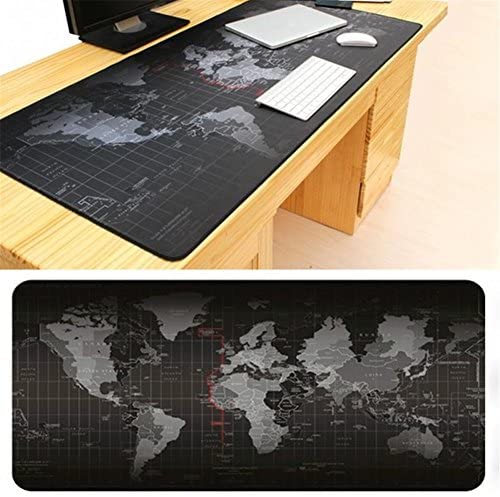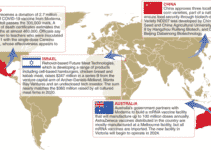“These capabilities are also used in other activities of serious concern, including large-scale surveillance activities enabling human-rights violations and abuses,” the official told the Journal.
This is the latest phase in a tech war that will force the world to be divided into two technology clusters – the US and its allies versus China and its allies.
Australia made it clear where it stands with its 2018 ban on the use of 5G telecommunications equipment supplied by Huawei, a company founded by ex-People’s Liberation Army military officer Ren Zhengfei.
Half a dozen other countries have banned Huawei, most notably the members of the Five Eyes intelligence network that includes Australia, Canada, the UK, New Zealand and the US.
The bifurcation of tech will create problems for many countries trading with China.
A perfect example is ASML Holding NV, the Dutch company that makes the world’s most sophisticated semiconductor manufacturing equipment.
This week, it said that as a Europe-based company with limited US technology, it would continue to ship non-EUV (extreme ultraviolet) lithography chip equipment to China.
But it said that it could not and would not ship its EUV equipment to China, a move that analysts at Nomura Research said would “prevent domestic Chinese companies from developing advanced chip manufacturing capability”.
Political pressure
“While we continue to think that restrictions on US chip equipment companies may well be sufficient to prevent Chinese domestic companies from developing advanced chip manufacturing capability, we think ASML’s stance on lithography equipment meaningfully weakens the US effort,” the Nomura analysts said.
“We suspect the US will try hard to persuade the Dutch government and ASML to fall in line with its actions.”
This political pressure is likely to play out across all cutting-edge technologies as the tech war between the US and China intensifies.
You can expect the Americans to put pressure on any “ally” selling to China any products and services related to artificial intelligence, electric vehicles, synthetic biology and space tech.
It would be naive to think China won’t catch up with the US in terms of advanced semiconductors and chips, it is just a matter of time.
A seminar this month on the China-US tech wars organised by London-based research house, GlobalData, and led by Michael Orme, the founder of SignumIntel, concluded that the world was fragmenting into economic security zones, each with its own technology stacks and standards.
Orme says the technology paths being pursued by more than 40 countries are becoming dependent on Chinese technology and its standards, thanks to the influence of China’s Belt and Road infrastructure policy and its Smart Cities policy.
The Belt and Road Initiative has had China invest billions of yuan in ports, rail and roads along the Silk Road that links the country with Europe. The Smart Cities program has resulted in half a dozen leading Chinese tech companies providing services to cities across Southeast Asia and India.
Orme says China has achieved parity with the West in certain aspects of AI and space. It leads the world in broadband price and performance, as well as in quantum computing.
Some have argued that China leads the world in AI simply because it needs to analyse the mountains of data generated by censorship and civilian monitoring.
The breadth, depth and volume of proprietary machine-readable data in China are far greater than in the US.
Leaps and bounds ahead
Orme says China’s control of key raw materials in the electric vehicle supply chain and its strong position in renewable energy will make it harder for allies of the US to disentangle themselves from China if the tech war hots up.
One area where China is leaps and bounds ahead of the West is in 6G mobile technology. It is accumulating more patents than any other country and positioning itself to shape the standards for 6G.
Orme says this sets up a potentially fierce battle at the coming meetings of the International Telecommunication Union. The global alternative to China’s attempt at mobile leadership is the collaboration between the US, Europe and Japan over 5G and 6G.
One measure of the state of play in the tech wars is the latest Global Innovation Index published by the World Intellectual Property Organisation in Switzerland.
The index examines more than 50 factors across education, business, institutions, academic research, market sophistication and infrastructure, and then judges each country on its knowledge and technology outputs and creative outputs.
The index, which ranks the US second behind Switzerland with China sitting at No. 11, found that for the first time China has as many top 100 S&T clusters as the United States. Australia is ranked No. 25 because it does poorly on technology outputs.
China is the only middle-income economy within the index’s top 30, and it is fast catching up with the US on many measures. It lags badly in human capital inputs and creative outputs.
The tech rivalry between China and the US has the potential to hinder the advancement of research that will help the fight against climate change and in other critical areas such as finding a cure for cancer.
As countries are forced to take sides in this war such as Europe, some of Asia, Australia and Japan backing the US while Russia and some ex-Soviet territories lean toward China there will be longer-term consequences.
The Americans will force much tighter control on data and much tougher cybersecurity.
In turn, the US will have to be more generous in sharing the benefits of its technology leadership.
Since the secret to success in science and technology is collaboration, it is likely the West will stand a better chance of winning. But it will have to be a lot more careful in protecting its tech achievements and intellectual assets.
One implication of the tech wars is the impact it may have on Australia’s education sector which has relied heavily on foreign students, primarily from China.
China was once happy to see students and scientists travel to the West to study and work and to bring home the knowledge attained overseas.
It will be fascinating to observe whether the students and scientists will be called back home as China steps up its side of the tech war. The difficulty with this sort of response would be the attitude of students and scientists who have assimilated into other societies.
The flip side of this sort of response is China being less tolerant of any foreign presence in mainland China.


